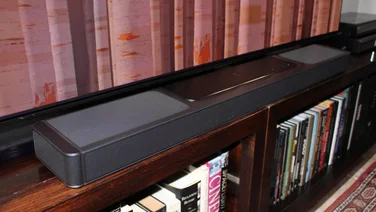To help us provide you with free impartial advice, we may earn a commission if you buy through links on our site. Learn more

The world of TVs is awash with acronyms, and keeping up to speed on them can often seem like homework. However, doing so is often key to buying the best TV for your needs.
Last year, the big news in high-brightness OLED screens was MLA, or Micro Lens Array. Developed by LG Display, it was hailed as a massive step forward in OLED panel performance. MLA seemed to herald a new era for the self-emissive displays.
MLA was (and still is) clever. Imagine a layer of microscopic lenses laid on top of OLED pixels to better focus emitted light out of the panel. Just how monumental an engineering feat this was can only really be appreciated when you realise that 5,000 of these microlenses could be parked atop a single pixel.
The result was undeniably effective, boosting the brightness (both at an average picture level and peak HDR) of OLED TVs without any need to drive the panel harder, and therefore consume more power, or shorten panel life.
OLED vendors rushed to adopt this wizard wheeze. The Panasonic Z95A and LG G4 OLED used it to great effect, and premium models from Philips – the OLED+959 and OLED909 – also sported MLA panels. MLA was the future of OLED technology. Until it wasn’t.
Just when we were all getting used to it, MLA was unceremoniously dumped to make way for Primary RGB Tandem OLED panel technology. LG Display clearly didn’t feel MLA was enough of a mouthful. This year’s CES event buzzed as journalists tried to remember in what order these seemingly random words went.
So what is Primary RGB Tandem OLED panel technology (or Panel RGB Primary Tandem), and why should you care?
Let’s pick through the word soup. I promise I’ll make this as painless as possible.
For those still counting, PRGBT OLED (as no one is calling it) is, by LG Display’s reckoning, a fourth-generation OLED technology and represents quite a leap over vanilla OLED (aka WOLED, aka White OLED).
Its attractions are obvious when you see it in action. It’s very bright and technically capable of reaching 4,000cd/m2. It’s also optimized for the era of AI, says its inventor, but that might just be bandwagon banter.
Rather than try and refocus errant light (which was the MLA approach), the new panel employs independent stacks of RGB (Red, Green, Blue) elements to produce light. Previously, LG had been using a three-stack light source, with two layers of blue elements emitting relatively short energy wavelengths alongside red, green, and yellow elements in a single layer.
For its Primary RGB Tandem structure, LG Display has organised the light source into four stacks, comprising two layers of blue elements and independent layers of red and green (stacked Blue, Green, Blue, Red). This improves the maximum brightness achievable by increasing the amount of light produced by each layer.
We’ve seen Apple use a two-stack Tandem OLED approach with iPads such as the M4-powered iPad Pro, but this new approach to TV panel manufacturing takes things up several notches.
A secondary benefit of this four-stack approach is that LG engineers have been able to increase maximum colour brightness. By separating the red, green and blue elements, colour purity is enhanced.
When measured, colour brightness clocks in at 2,100cd/m2, a 40% improvement over previous OLED generations (1,500cd/m2). This improved colour purity has also led to better coverage of the DCI-P3 cinema colour space, now said to reach 99.5%.
A further bonus comes from energy efficiency. The manufacturer says it has managed to reduce overall operating temperature, thereby realising a 20% energy saving on a 65in TV, again compared to the previous generation.
Early hands-on experiences with screens using Primary RGB Tandem glass have been hugely impressive. The LG G5 OLED earned a Best Buy award upon review. I was blown away by the new Panasonic Z95B at CES, and Andy White very much liked the look of the Philips OLED+910 when he saw it in Barcelona.
LG Display is also incorporating complementary refinements to better exploit the new structure. It has developed a novel film that offsets both light reflected from the display’s surface and light absorbed and reflected inside the panel. Consequently, this new fourth-gen OLED is said to block 99% of internal and external light reflections, giving a deep, nuanced black level performance regardless of ambient lighting conditions. The new TV panel can maintain its colour gamut and is capable of 100% colour accuracy at 500 lux, which is the equivalent of a brightly lit room.
There are other less obvious benefits to Primary RGB Tandem OLED. It reputedly emits just 45% blue light compared with the 70% level that you might expect from an LCD screen. It’s also more eco-friendly, apparently using more than 90% fewer plastic raw materials than LCDs. All of which is well and good.
However, the most exciting thing about LG Display’s new panel tech remains just how great it looks with HDR content. Fireworks, reflections and explosions all have an extremely impressive luminosity – and the panel has enough headroom to allow SDR (Standard Dynamic Range) content to receive a significant brightness bump too.
So, is Primary RGB Tandem the last word in OLED panel technology? Almost certainly not. Samsung continues to push boundaries with the quantum-dot OLED displays found on its flagship 4K TVs, meaning there’s more than one horse in this race for premium TV supremacy.
And who knows? MLA might yet return, this time placed atop of the new RGB Primary Tandem panel, to once again boost brightness – although I’d imagine the production costs would probably be prohibitive. Still, the acronym would be immense.






